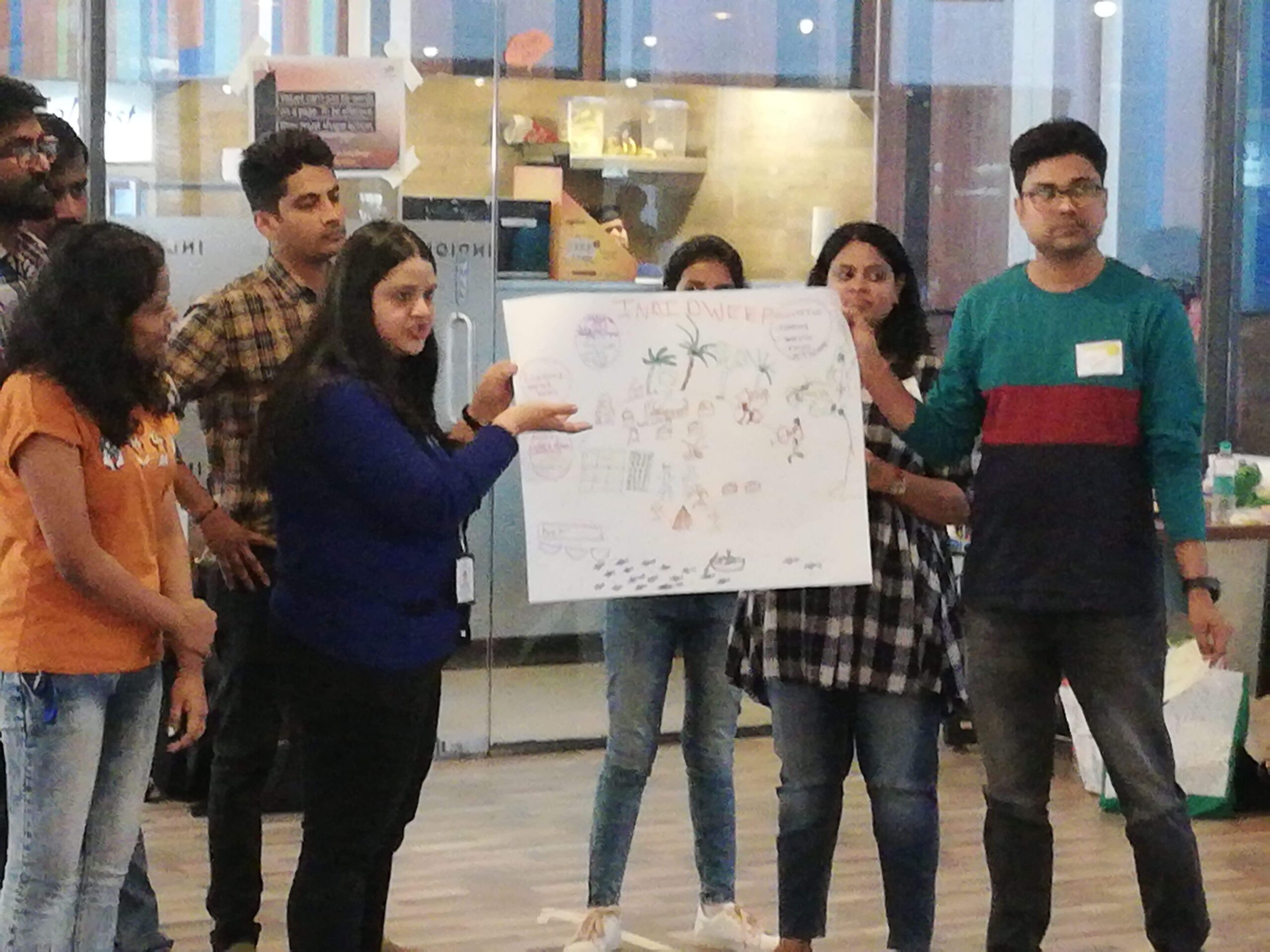While the learning journey still continues, which took flight in March 2019 came to an exciting end, last week, in Oct 2019.
Eight months with a bunch of Senior Managers was exhilarating and energising for us! After every workshop, I came back home with so many humbling experiences; teaching me to learn every day , from everyone!
We started with a bunch of 18 sceptics and turned them into 18 raving fans!! This is a story of how we made it happen!
When we embarked on this project, we knew it’s not going to be a cakewalk, considering the experience of the learners, the duration and the topics that had to be covered. We had to think through strategies, not just to deal with the ‘I know it all’ s, but to convert them into enthusiastic learners.
So, how did we successfully complete this journey and manage to transform the leaders in their attitude, behaviours and actions, that during the finale event, one of the Directors came running to us asking “what kind of magic did you guys do, that he’s actually getting his team to outperform the rest of us!”
Here are the ingredients of the magic dust we used 🙂
- The Prelude: The context setting is very crucial for any journey-based program. A strong buy-in from the internal L&D/HR team is a must-have for this. The launch of the program was a grand event with all the senior leadership team attending the event and emphasizing the importance of the program and its impact on the growing organisation and its leaders.
- Facilitative Methods: We let the leaders take charge of the session, by deciding, what they would like to learn, what pace they would learn, letting them facilitate activities, and share experiences and best practices. They felt liberated and empowered not having to follow rules set by a trainer and deciding the pace of learning themselves.
- Stringing the topics in order: The journey was designed with one topic done once a month. Choosing these topics carefully and in a sequence helped us reiterate the application of the concepts learnt in previous sessions, in the subsequent sessions. For example, application of Emotional Intelligence(EI) and Strategic Leadership was brought in during the change management session. Choosing the topics, the sequence and the spacing, was very crucial to the success of this journey. They were strung together seamlessly like pearls of a necklace!
- Fresh Flavour to Old Topics: We brought in fresh frameworks, methods, etc. to everyday topics like EI and Feedback. For example, we used the six seconds model for EI instead of the Daniel Goleman’s model. We used a framework called ‘Radical Candor’ instead of a SBI or GROW for feedback. This helped us capture their curiosity and attention into learning something new. So, those who walked into the room thinking ‘this is the nth time I’m attending a EI workshop’ was taken in for a surprise!
- Varying the Learning Methodology: The facilitation tools used for every session was different. If we used role-playing for one session we did not repeat it for another. The participants came in expecting to witness something new every session. We did video-recording & playback, role-plays, improv & theatre, game-based learning, immersive learning, Lego serious play, graphic facilitation to name a few. This, was one reason why we had 95-100 % attendance for every single session.
- Weaving in the Business Relevance: Every single carefully designed activity or exercise will fall flat, if the outcome is not tied back to workplace relevance. The participants, while having an enjoyable time in the class, also took back powerful ideas and thoughts on implementing the concepts learnt in their current roles. As facilitators we spent a lot of time with the business partners like HR, Admin, Finance etc, to develop a deeper understanding about the business dynamics of the organisation. This helped us speak their language and have powerful debriefs crafted for every single game, exercise or activity we did in the class.
- Follow-up & Deliberate Practice: We designed a simple yet concrete Action Learning Plan (ALP) for follow-up, and this was discussed during the subsequent group coaching session. The leaders came prepared with their stories and experiences of using the different tools and frameworks. They discussed the challenges with the facilitator/coach and sought feedback and guidance from him. The ALP was carefully designed on the ‘Deliberate Practice’ philosophy for mastery of any skill.
Teasers and Snapshots : A week before the scheduled session, we sent out teasers in the form of posters to the participants . The teasers had interesting graphics and one quick video for them to watch. This kindled their curiosity and played a big role in getting attendance and engagement to high levels. After every workshop, we sent out one pager snapshots which encompassed the concepts and learnings of the day! This served as a refresher for them, and a tool for continuous engagement for us! The one pager snapshot was also used for reference during coaching conversations that followed.

